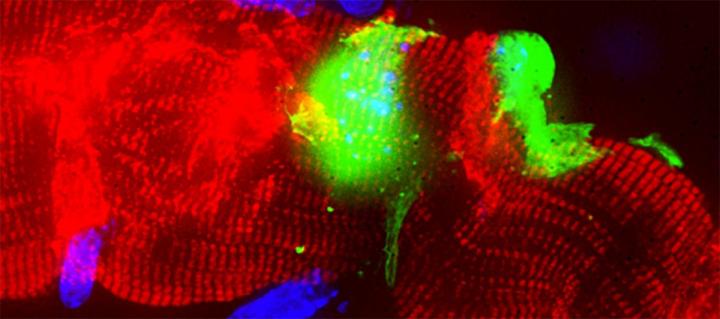New study from Edinburgh researchers shows that leprosy bacteria can promote host cell reprogramming
A discovery about the way in which bugs spread throughout the body could help to develop stem cell treatments.

Researchers from Edinburgh Infectious Diseases in the MRC Centre for Regenerative Medicine, have found that bacteria are able to change the make-up of supporting cells within the nervous system, called Schwann cells, so that they take on the properties of stem cells.
Because stem cells can develop into any of the different cell types in the body - including liver and brain cells - mimicking this process could aid research into a range of degenerative conditions.
Scientists made the discovery studying bacteria that cause the infectious neurodegenerative disease leprosy.
The study, carried out in mice, found that in the early stages of infection, the bacteria were able to protect themselves from the body’s immune system by hiding in the Schwann cells.
Once the infection was fully established, the bacteria were able to convert the Schwann cells to become like stem cells. Like typical stem cells, these cells have the potential to become other cell types, for instance muscle cells. This enabled the bacteria to spread to other tissues in the body.
This is very intriguing as it is the first time that we have seen that functional adult tissue cells can be reprogrammed into stem cells by natural bacterial infection, which also does not carry the risk of creating tumorous cells. Potentially you could use the bacteria to change the flexibility of cells, turning them into stem cells and then use the standard antibiotics to kill the bacteria completely so that the cells could then be transplanted safely to tissue that has been damaged by degenerative disease.”
Spreading infection
The bacteria-generated stem cells also have another unexpected characteristic.
They can secrete specialised proteins – called chemokines – that attract immune cells, which in turn pick up the bacteria and spread the infection. Scientists believe these mechanisms, used by leprosy bacteria, could exist in other infectious diseases.
Knowledge of this newly discovered tactic used by bacteria to spread infection could help research to improve treatments and earlier diagnosis of infectious diseases.
Greater understanding of how this occurs could help research to diagnose bacterial infectious diseases, such as leprosy, much earlier.
This discovery is important not just for our understanding and treatment of bacterial disease, but for the rapidly progressing field of regenerative medicine. In future, this knowledge may help scientists to improve the safety and utility of lab-produced pluripotent stem cells and help drive the development of new regenerative therapies for a range of human diseases, which are currently impossible to treat.
The study, carried out in Professor Rambukkana’s laboratories at the University of Edinburgh and the Rockefeller University, was funded by the US National Institutes of Health.
The study entitled "Reprogramming Adult Schwann Cells to Stem Cell-like Cells by Leprosy Bacilli Promotes Dissemination of Infection" was published in the journal Cell on 17 January 2013.
Related links
This story has received extensive coverage in the science and general media.


